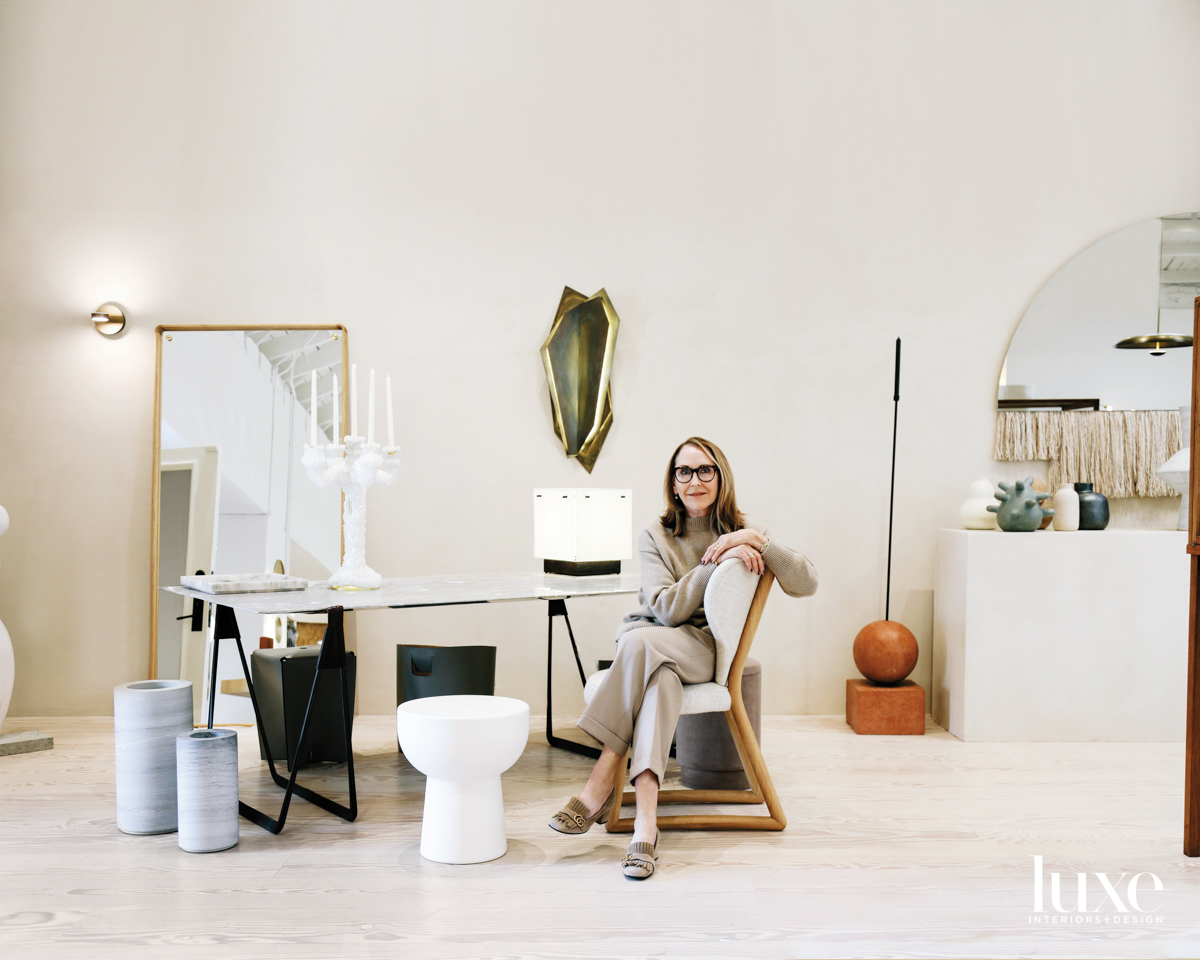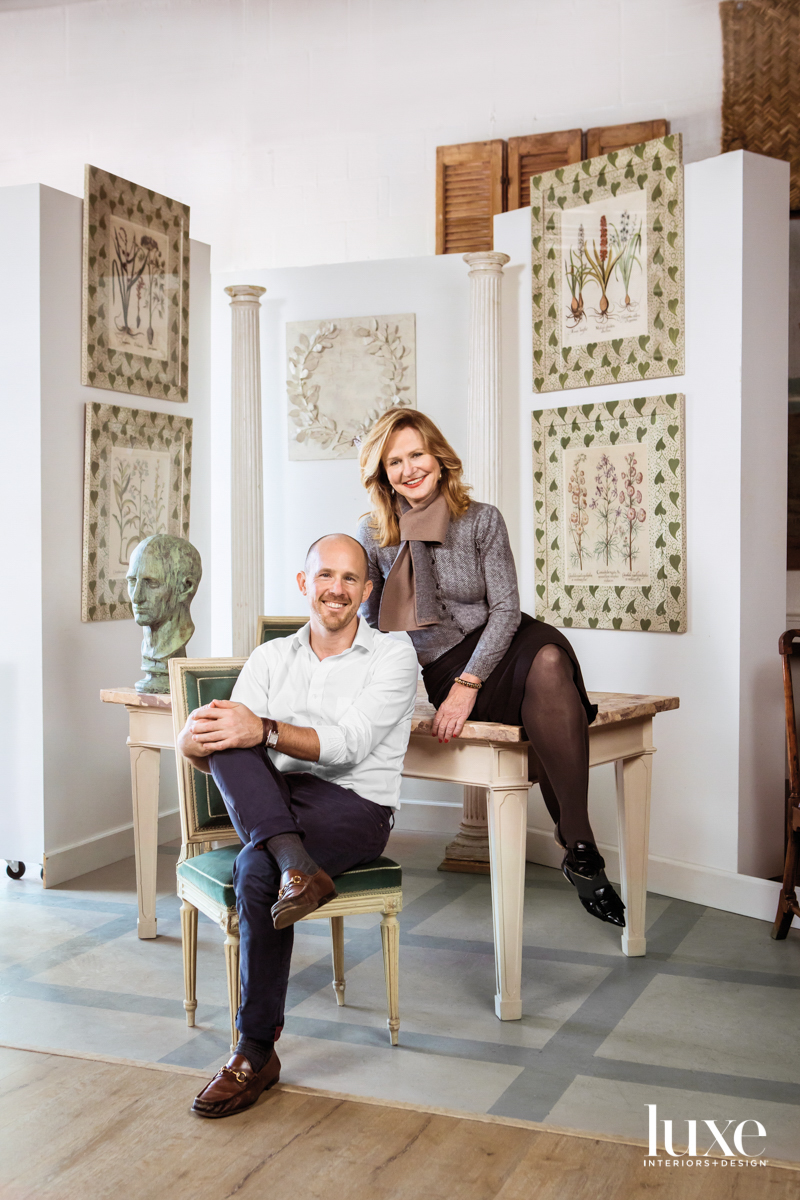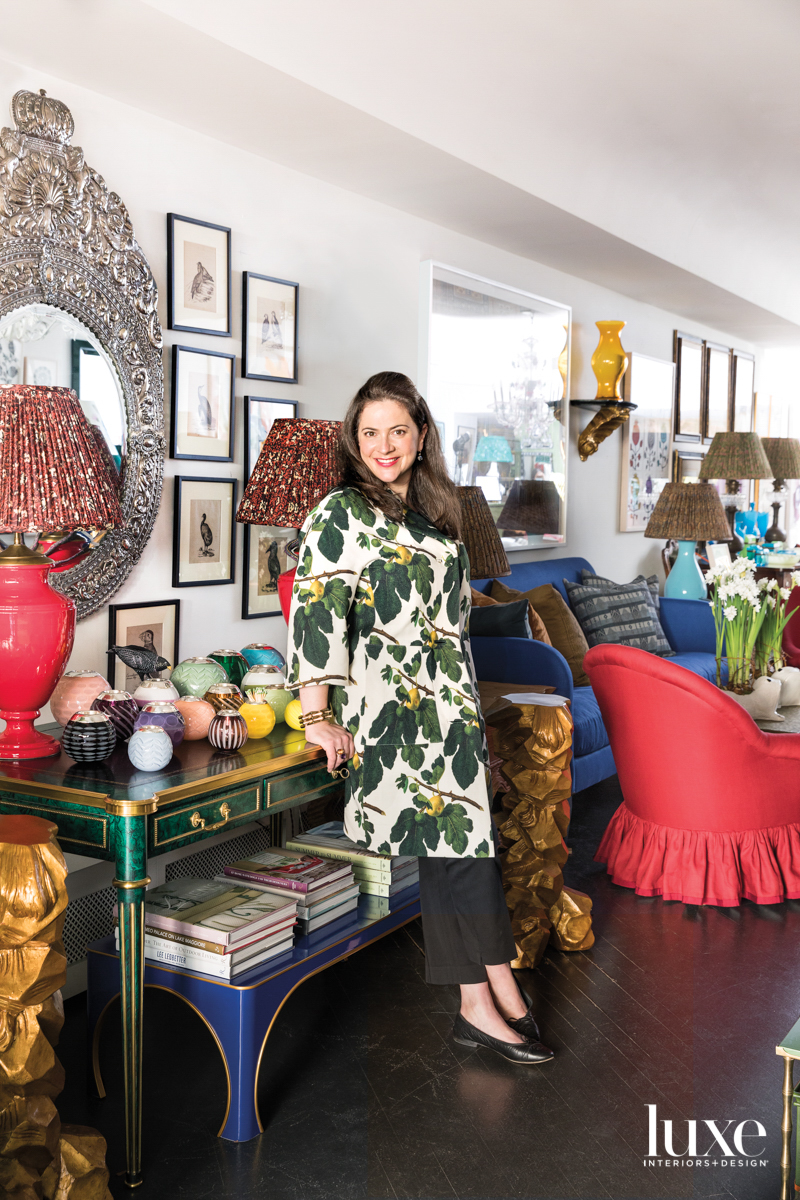Through their offerings, these shops help offer differing aesthetics that define and power American design. Here, the pros share their creative journeys and dish on what’s new and next in market trends.

Scott Sitz in her Los Angeles Shop. (Photo by Amy Dickerson)
SARTORIAL INFLUENCE
Scotti Sitz | Garde, Los Angeles and Summerland, California
I try not to go on social media. I don’t look at Instagram unless I have to. It allows me to focus on buying what I love for the store, and that is what sets the tone at Garde. If you walked into my shop right now, I hope you’d say: ‘Oh my God, this space is so beautiful. I want to live here.’
Our look has been described as minimal, organic and neutral. I don’t like the word ‘eclectic,’ but you could say I’m a believer of a ‘not decorated’ look. You should choose basics reflecting your personality, style and history; and that’s what our clients are looking for. They also want to learn something new and be inspired.
My background is in fashion. I developed a minimalist aesthetic working for Calvin Klein and learned to appreciate textures and an architectural look at Giorgio Armani. After 20 years, I was eager to do something outside of the corporate world. I had always wanted a store, but I started working in interior design. While shopping for a client who wanted European decor, I discovered many things you couldn’t find here, and that’s how I decided to open a place of my own.
I want Garde to be approachable. Everything we sell has a story, and we enjoy telling that tale. A story is important, because there is so much out in the world, and many times you may purchase an item without really connecting with it or knowing what you’re buying. There’s also a whimsy and lightness about our pieces; they are often tongue in cheek, heartwarming or funny. It’s kind of like the fashion concept where you put together a Gap T-shirt and a Chanel skirt. We try to replicate that idea with furniture, presenting people with a livable, yet elegant style and a point of view that welcomes and educates.

Cris Briger (right) with her son, Charles Peed, in their West Palm Beach Showroom. (Photo by Sonya Revell)
PRETTY UP
Cris Briger and Charles Peed | Casa Gusto, West Palm Beach
CB: My family is well-traveled. We spent a lot of time in Europe, and we dragged our children to antique flea markets and every museum we could find. I never imagined that any of them would join me in a business like this. Now, my son Charles co-owns this shop, and another son, Pablo, recently joined in as well.
CP: We started this store on the idea that we have a distinct taste and style, and that if we could bring one-of-a-kind things forward, someone would like it. Our look is ‘lived in’—a look where you would find comfort. But it’s also bold— we are not afraid of pattern and color.
CB: We are bringing pretty back. We feel like it’s OK for people to have pretty rooms; a concept that seemed to lose favor for the last 20 years but is returning. The atmosphere here is easy and Latin as well as European influenced. It’s the idea of con gusto, which means ‘with pleasure.’ It’s not uptight; we set coffee cups on furniture, and we don’t put glass tops on the furniture. We have a lot of North American, European and Latin pieces, but the way we present them is with a more American attitude. We are known for taking something that’s ordinary and tired and bringing a fresh vibe to it. We also have a lot of classically inspired pieces we’ve commissioned—it’s a fascinating mix.
CP: In Mexico, we found that a lot of artists were making things with papier- mâché. We decided to put our own twist on it, commissioning botanicals, fruit and even a bust of Julius Caesar using the technique. We’ve also put our own spin on classic Mexican talavera pottery. We’ve commissioned plates and bowls with updated patterns that appeal to everyone, even our youngest customers.

Kate Rheinstein Brodsky in her Manhattan store, KRB. (Photo by Lesley Unruh)
MIX MASTER
Kate Rheinstein Brodsky | KRB, New York
It’s very American not to be afraid to mix things of different periods, styles and colors. The great decorators in this country never shied away from that, they just used whatever they wanted. In this sense, we are a very American shop. We show people how to put disparate items together—it’s one of the things that makes people pay attention to us. We create vignettes that give people a context for how to do it. For example, we might put a 19th-century English serpentine server with a contemporary sofa and then hang a modern painting by Mary Nelson Sinclair above it. The mix grounds the whole thing and gives it depth. It allows us to make antiques relevant again and to show that they have a place in today’s home.
I learned about retail and style from my mother, Suzanne Rheinstein. She had a store in Los Angeles for 30 years and, as a young person, I went to her shop every day after school. After my homework was done, I’d help her out, everything from arranging displays to sending out mailings. I fell in love with retail there.
When I started this store, it was a straight-up antique shop with a few home accessories. But a new space gave us more room and allowed us to try new things. We are now carrying 50 percent antiques and vintage furniture and the rest is new and handcrafted furniture, art and accessories. The handmade is compelling in home design, and I’m lucky to be able to create a platform for smaller artists and brands, as well as a colorful place full of interesting objects you want to get closer to and discover.

